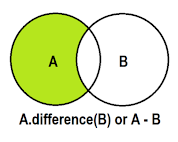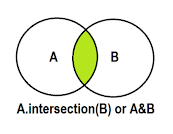- The tool .difference() returns a set with all the elements from the set that are not in an iterable. Sometimes the - operator is used in place of the .difference() tool, but it only operates on the set of elements in the set.
- Set is immutable to the .difference() operation (or the - operation).




